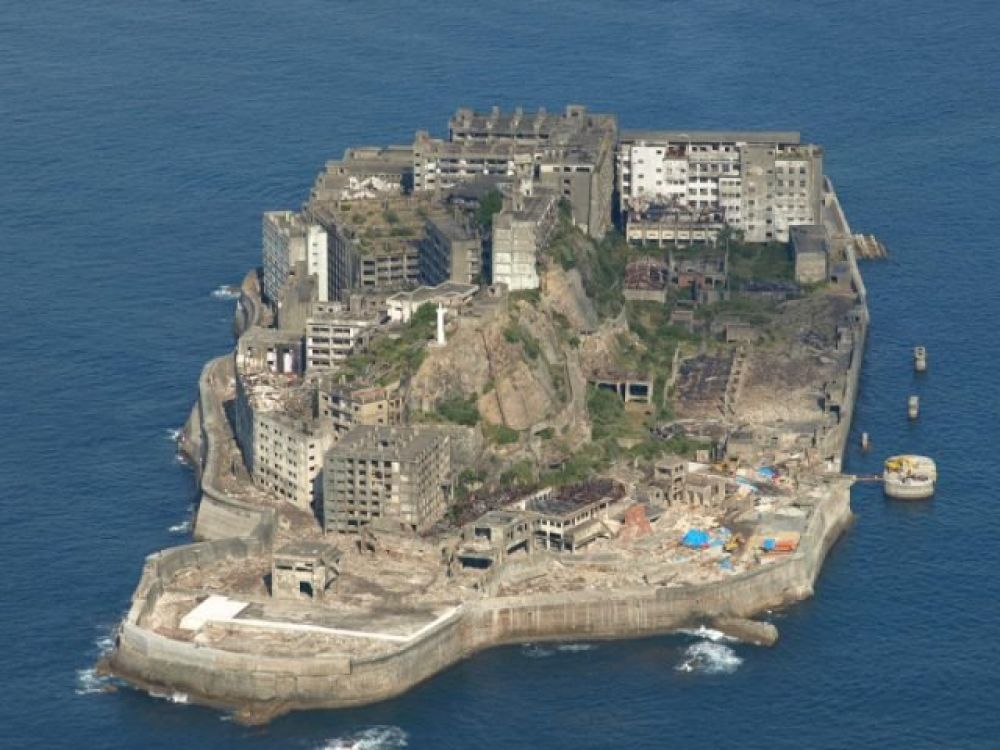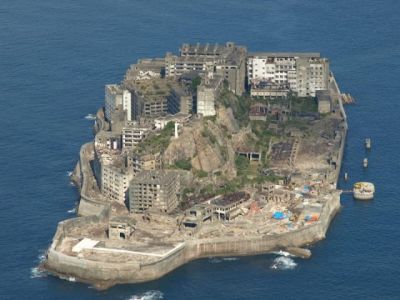

Embark on an unforgettable expedition to Gunkanjima, also known as Battleship Island, a UNESCO World Heritage site. Once a bustling coal mining facility with the highest population density in the world, this island is now an eerie ghost town after its abandonment in 1974. The tours include a boat ride circling the island, providing a panoramic view of the dilapidated concrete buildings, which inspired settings in the James Bond film 'Skyfall'. On special tours, visitors are even allowed to disembark and walk along a designated path, offering a closer glimpse into the island's haunting past. The knowledgeable guides provide historical context, explaining both the life of the miners and the reasons behind the island's decline. It's a poignant reflection on industrial history and an eye-opening experience showcasing the intersection of human endeavor and its aftermath.
The Gunkanjima Digital Museum offers a high-tech indoor experience that brings the history of Battleship Island to life through immersive displays and interactive technology. There, visitors can engage with 3D models, virtual reality, and extensive photographic archives that illustrate the island's bustling past as a coal mining community. It's an educational and engaging alternative for those who cannot visit the island itself or prefer to avoid the elements. Through visually rich storytelling and factual exhibits, the museum provides a comprehensive understanding of daily life on Hashima Island, its industrial significance, and the reasons for its eventual desertion. The museum is especially suitable for families with children, as it provides an accessible format for learning about this unique chapter of Japanese history.
Experience Hashima Island from the unique perspective of the water with a sea kayaking adventure. Paddling around the island offers adventurers a personal encounter with the dramatic walls and ruins that cannot be experienced from the larger tour boats. This activity is suitable for both beginners and experienced kayakers, with trained instructors guiding participants through the blue waters, all while revealing the island's history and geological features. Although visitors are not allowed to land on the island for preservation reasons, kayaking provides a rare view of Gunkanjima's perimeter, inviting explorers to ponder the mysteries hidden within its walls. Remember that this activity is weather-dependent, and sea conditions will dictate the feasibility of the trips.
For photography enthusiasts and professionals alike, Gunkanjima opens its doors to a world of visual storytelling through its unique ruins and historical ambience. Photography tours are specially curated to help capture the stark beauty and desolation of the island with expert guidance from a professional photographer. Participants will learn the best techniques for shooting abandoned structures, landscapes, and the intricate play of light and shadow amidst the island's haunting atmosphere. Tours may offer access to restricted areas, providing exclusive opportunities to photograph parts of the island that regular tours do not cover. The resulting photographs are not only captivating images but also powerful narratives of the island's rise and fall.
There's hardly a more magical way to end a day near Hashima Island than with a sunset cruise. As the day wanes, visitors board a boat to enjoy the splendid sunset hues reflecting off the abandoned island. The cruise provides a tranquil ambience, with the setting sun casting warm light on the island's decrepit buildings, creating a surreal spectacle. It's a peaceful time to reflect on the historical significance of Gunkanjima while basking in the natural beauty of the surrounding sea. The sound of the waves and the distant views of Nagasaki's skyline further complement the experience, making it an ideal activity for couples or those seeking a moment of serenity.
While not located on Hashima Island itself, Nagasaki offers insightful walking tours that help contextualize the historical importance of the island within the broader story of the city. These tours traverse important sites in Nagasaki, where experienced guides narrate the tales of the city's rich history, from its time as a vital port open to international trade to its darker days impacted by war. The connection between the city and Hashima Island is highlighted, shedding light on the role that the island played in Nagasaki's industrial development. Along the way, visitors get to sample local delicacies, visit historical buildings, and learn about the cultural influences that have shaped this unique city.
Diving enthusiasts can take the opportunity to explore the waters around Hashima Island, where the submerged ruins of buildings and mining infrastructure lie hidden beneath the waves. The underwater escapade offers a glimpse of the island's industry that extended offshore. This diving experience is usually conducted by certified divers and is limited to those with appropriate diving qualifications due to safety considerations. Divers can expect to encounter a variety of marine life that has made the submerged structures their home, showcasing how nature reclaims human-made environments over time. It's a unique juxtaposition of industrial ruins and thriving ecosystems, creating an indelible impression of life's resilience.
A visit to the Nagasaki Peace Park is a moving and profound experience, as it honors the victims of the atomic bombing of Nagasaki on August 9, 1945. Though not specific to Hashima Island, it provides important historical context for the region and serves as a somber reminder of the city's past. The park contains the iconic Peace Statue, which symbolizes the wish for world peace and the abolition of nuclear weapons. Visitors can also explore the Nagasaki Atomic Bomb Museum, which details the events of the bombing and its aftermath with poignant exhibits and testimonials. The park's serene grounds and powerful messages of peace and hope leave a lasting impact on its visitors.
When the sun sets, take part in a cultural heritage night walk around Hashima Island's neighboring city of Nagasaki. The lantern-lit streets offer a mystical backdrop to explore the historical sites and hidden gems of the city. The night tour emphasizes stories of local legends, historical events, and the cultural significance of various landmarks. Age-old temples, traditional merchant houses, and hidden Christian sites are some of the focal points of this tour, which are sometimes overlooked during daytime explorations. It's an enchanting way to absorb the cultural atmosphere of Nagasaki, inextricably linked to the legacy of Hashima Island.
Meganebashi (Megane Bridge), also known as Spectacles Bridge, is an iconic stone arch bridge in Nagasaki that gets its nickname from its reflection on the water, resembling a pair of spectacles. It's one of the most picturesque spots in the city and offers a peaceful stroll along the Nakashima River. Adjacent to the bridge is a museum dedicated to the history and significance of spectacles in Japanese culture, tracing back hundreds of years. The museum showcases an extensive collection of eyewear, some of which relate indirectly to the miners of Hashima Island who would have relied on such implements in their daily work. A visit to this site provides an interesting and slightly unusual historical perspective, wrapped up in the charming setting of a riverside walk.
